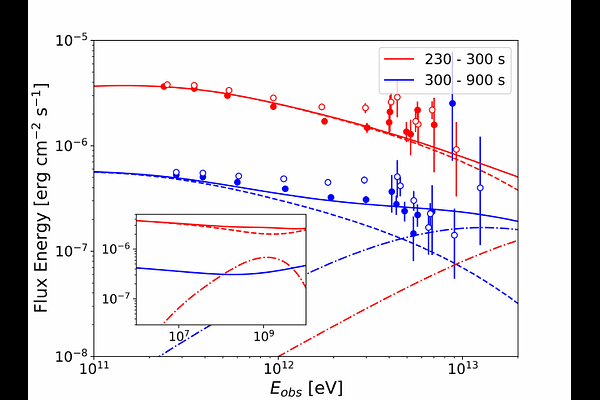Interpreting the multi-TeV emission from GRB 221009A with a second electron component accelerated by turbulence in the jet

Interpreting the multi-TeV emission from GRB 221009A with a second electron component accelerated by turbulence in the jet
Xing-Wei Gong, Ruo-Yu Liu, Ze-Lin Zhang, Katsuaki Asano, Martin Lemoine
AbstractThe detection of very high-energy (VHE) afterglow emission of the gamma-ray burst (GRB) 221009A by the Large High Altitude Air Shower Observatory (LHAASO) provides a unique opportunity to probe particle acceleration in relativistic outflows. The hard spectrum at multi-TeV band cannot be fully explained by synchrotron-self-Compton radiation of the conventional one-zone afterglow model. In this work, we introduce a second component of relativistic electrons from stochastic acceleration via downstream turbulence of the external shock. Using a Fokker-Planck approach to model the evolution of protons and electrons, and the non-linear feedback of turbulence damping, we show that the inverse Compton radiation of the second electron component may harden the observed spectrum above multi-TeV energy, and significantly ameliorate the fitting to the spectral evolution measured by LHAASO without violating lower-energy observations. We also discuss the potential presence of the second electron component in other GRB afterglows, which may provide a possible observational signature for future studies.